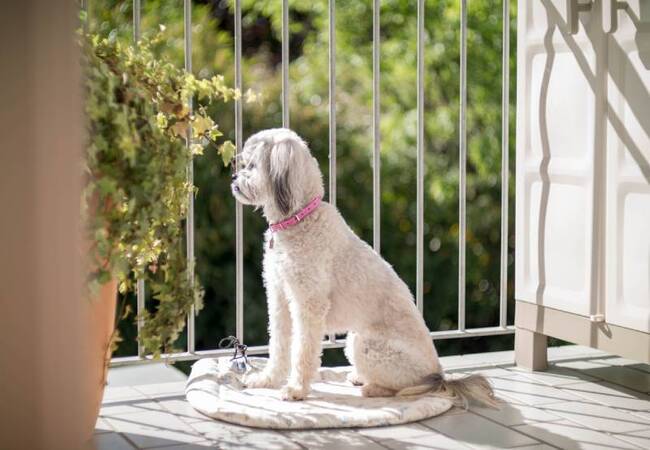Balcony Safety for Pets: 2025 Vet-Approved Guide to High-Rise Hazards 🐕🐈

In this article
🐾 Balcony Safety for Pets: How to Prevent High-Rise Hazards in 2025 🐶🐱
By Dr Duncan Houston BVSc
Balconies offer a delightful space for both humans and pets to enjoy fresh air and sunshine. However, they also pose significant risks to our furry companions. From potential falls to exposure to harmful elements, it's crucial to ensure that balconies are safe environments for pets. This comprehensive guide provides essential tips to help you safeguard your pets on balconies in 2025.
🐕 Understanding the Risks
While balconies can be enjoyable spaces, they come with inherent dangers for pets:
-
Falls: Pets, especially cats, may attempt to jump or may accidentally fall off balconies, leading to serious injuries or fatalities.
-
Entrapment: Pets can get their heads or limbs stuck between railings, causing panic and potential injury.
- Exposure: Balconies may expose pets to extreme weather conditions, harmful plants, or dangerous items like grills.
🐾 High-Rise Syndrome in Cats
High-Rise Syndrome refers to injuries sustained by cats falling from significant heights. Despite their agility, cats are not immune to injuries from falls. Common injuries include:
- Fractured limbs
- Facial trauma
- Internal injuries
It's a misconception that cats always land on their feet without harm. Even falls from lower heights can result in serious injuries.
🏠 Making Balconies Pet-Safe
To ensure your balcony is a haven for your pets, consider the following measures:
-
Secure Railings: Install mesh or plexiglass barriers to prevent pets from slipping through or getting stuck.
-
Supervision: Always supervise your pets while they're on the balcony to prevent accidents.
-
Remove Hazards: Keep harmful items like grills, toxic plants, and sharp objects out of reach.
-
Provide Shade and Water: Ensure pets have access to shade and fresh water to prevent overheating.
- Use Harnesses: Consider using a harness and leash to control your pet's movements on the balcony.
🌿 Choosing Safe Plants
Many common balcony plants can be toxic to pets. Avoid plants like lilies, azaleas, and oleander. Opt for pet-safe plants such as:
- Spider plants
- Bamboo palm
- Areca palm
🧰 Emergency Preparedness
Despite precautions, accidents can happen. Be prepared by:
-
First Aid Kit: Keep a pet-specific first aid kit accessible.
-
Emergency Contacts: Have your veterinarian's contact information readily available.
- Microchipping: Ensure your pets are microchipped and have updated ID tags in case they escape.
📱 Leveraging Technology for Pet Safety
Modern tools can assist in managing your pet's safety effectively:
-
Ask A Vet App: Access expert veterinary advice and schedule consultations conveniently.
-
Woopf: Utilize training resources tailored to your pet's breed and behavior.
- Purrz: Monitor your pet's activity levels and set reminders for health check-ups and medication schedules.
🎯 Conclusion
Balconies can be enjoyable spaces for pets when proper safety measures are in place. By understanding the risks and implementing preventive strategies, you can create a secure environment for your furry friends to enjoy the outdoors safely.
For personalized guidance and support, visit AskAVet.com and download the Ask A Vet app today! 🐾📲






